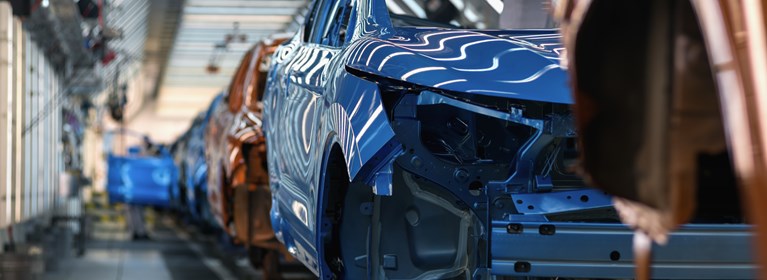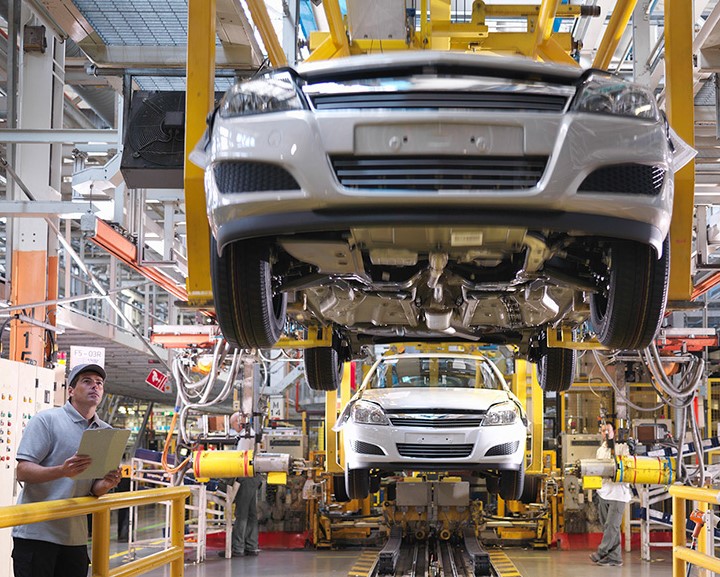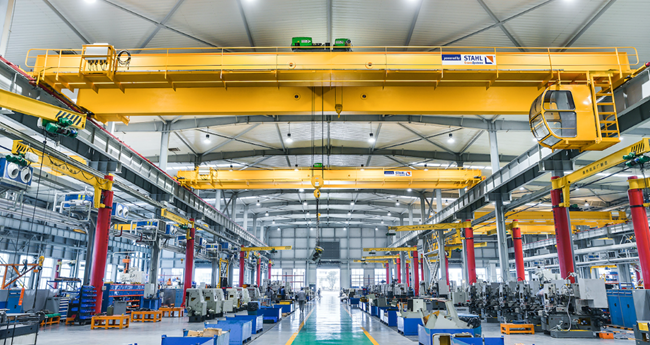Automotive Automation Systems
Columbus McKinnon’s Unified and Magnetek brands have more than 20 years of experience delivering automated systems to the automotive industry.

Automotive Factory Automation from Start to Finish

From the first step of the automobile production process to taking the final assembled vehicle off the line, automation technology is hard at work. Time is money, so productivity is critical and uptime is of the utmost importance.
For this reason, optimization of the automotive assembly line has always been an essential element within any automobile manufacturing facility and automation can help. In 1954, General Motors introduced Unimate, the first industrial robot, and is one of the largest users of robotic automation among U.S. automakers. And, that was only the beginning. Automotive automation technology continues to evolve, helping manufacturers meet the needs for increased productivity.
So, what is automotive automation?
Simply put, automotive automation is the use of computer-programmed mechanical equipment during the assembly of an automobile. Automotive automation technology ranges from a pre-programmed overhead crane repeatedly delivering transmissions to a set location in a facility to robotic arms installing windshields without the need for human assistance. Not only does this technology reduce takt time, it reduces the chance of human error and accidents. Learn more about our automotive automation solutions.
Automated Car Manufacturing
The vehicle skeleton is assembled in the BIW stage, but the external-facing pieces, such as the roof, side panels, doors, hood, trunk, bumpers, and more, are assembled in this phase. Rather than fetching all these components one by one, an auto-dispatch system is used to automatically retrieve the items, allowing the operator to work on the next step in the production process.
During this stage, everything from the HVAC system and seats to the radio and dashboard are assembled. Once the interior trim has been assembled it is married to the chassis. Using specialized software, specifically designed for material handling applications, parameters such as hook height, load status, and speed can be programmed, monitored, and adjusted as necessary.
To keep your system and products functioning effectively, advanced diagnostics provide critical information, including positioning and motion, equipment status, and energy usage. If your system goes down unexpectedly, Intelli-Connect™ Diagnostics and Analytics helps reduce your Mean Time To Recover (MTTR).
Automotive Assembly Line Automation
Featured Product
WATCH: Introduction to IMPULSE®·G+/VG+ Series 5 Variable Frequency Drives
New Magnetek-brand IMPULSE Series 5 Variable Frequency Drives are designed to serve as the intelligent foundation for overhead cranes and hoist systems. This recorded webinar provides a detailed look at the new IMPULSE·G+/VG+ Series 5 VFDs and their proper application for overhead cranes.
This webinar covers:
- Introduction of IMPULSE·G+/VG+ Series 5
- Comparison to IMPULSE·G+/VG+ Series 4
- Improvement Highlights
- New Features
- Available Accessories
- Upcoming Product Updates
- Documentation & Resources




 North America - EN
North America - EN








